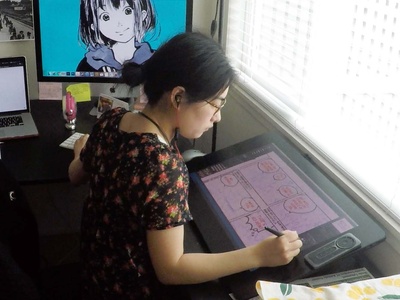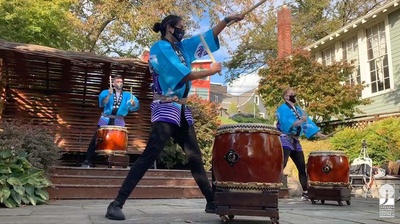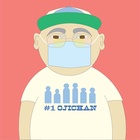Located in Seattle, the Japanese Cultural & and Community Center of Washington (JCCCW) offers many quality programs to fulfill its mission, “To build and grow a central gathering place for sharing and promoting Japanese and Japanese American culture and heritage.” Our programs include community events, the Northwest Nikkei Museum, and the Seattle Japanese Language School, the oldest Japanese language school in North America.
Due to the coronavirus pandemic, most of these programs went online in 2020. One of our popular events, “Bunka no Hi” (Japanese Culture Day), was among them. In previous years, we shared cultural performances such as taiko (Japanese drums) and traditional dancing, demonstrations of martial arts and tea ceremony, historical and cultural exhibits, craft making and more with 600-700 guests at our location as a free public event in November.
This year, as our online cultural summer camp for youth came to a close, we started our planning for Bunka no Hi and decided to offer a variety of Japanese and Japanese American cultural activities and information to the community through JCCCW YouTube channel and a downloadable booklet. We chose five themes for the videos – Seattle’s Japantown Past and Present, Manga: Shin-Issei Journey, Kamishibai Storytelling by Request, Taiko Performances, and What’s Mochi? and named the event “Virtual Bunka no Hi”.
All staff worked together on video production from script writing to filming, narrating, and editing. Some even emceed or demonstrated in the videos. For most of us, it was our first time getting involved in video production. Coordinating filming while maintaining social distancing was a challenge, but we were able to space out the filming both by location and date to keep everyone safe. Mochitsuki is something many families do in preparation for the New Year, yet due to the pandemic, we're unable to gather, so it was really special to be able to both see staff, and continue the tradition.
Except for the filming, the staff finished all their work remotely by sharing many different materials online. It sometimes made our communication hard, and it was stressful to move the project forward by constantly going through tens of folders set up for each video that stored all storyboards, footages, photographs, narrations, and others.
Anna Mariko Seymour composed beautiful original music for the opening theme song of the event, and throughout the videos. During the entire month of November, these videos were released one at a time, every Sunday.
We missed interacting with guests, performers and other participants in person, but a Virtual version of Bunka no Hi has some great advantages.
First, people can enjoy these videos from all over the world. All videos are in both English and Japanese so people in Japan can enjoy them as well and learn about Japanese American culture and history. About a month and a half after its release, the first video, Seattle’s Japantown Past and Present had received nearly 1,400 views. The others have received 400-700 views as of the middle of December.
Second, our normal Bunka no Hi is a one-day event, but virtually, people can watch these videos whenever they want. They are on YouTube forever, and viewers can use them for their own educational purposes.
Third, we were able to include a theme like mochi. Mochi is sticky rice cake, a must for Japanese New Year’s Day. Food is a very important part of Japanese culture, but we couldn’t have a food-related activity at an event open to the public because of health and safety concerns. This time, we filmed traditional mochi pounding and four guests cooking ozoni (mochi in soup for New Year celebration) in their regional styles.
Here are highlights from each video.
- Seattle’s Japantown Past and Present: Visit Japantown before WWII through nearly 70 historical photos of various locations and people, as well as their present day counterpart.
- Manga: Shin-Issei Journey: This video features Arisa Nakamura, a manga artist and our colleague, and includes manga drawing tips from her. Her manga strip, “Shin-Issei Journey” is published bi-weekly in The North American Post, a Japanese American newspaper in Seattle.
- Kamishibai by Request: Kamishibai is a traditional storytelling method. We asked the community for story suggestions and selected “The Legend of the Sun Goddess Hiding in a Cave”. This original kamishibai story about Japanese myths includes “The Birth of Japan”.
- Taiko Performances: In this video, viewers can enjoy lively taiko performances, instruction for practicing taiko, and can learn about taiko culture and instruments. This video was made possible with support from the School of Taiko, which offers classes in the Seattle area.
- What’s Mochi?: Learn how mochi is traditionally made and many tasty ways of eating it including different regional ozoni.
Families can also enjoy our new booklet, titled Japanese Winter Fun Book. It is packed with information about Japanese winter holidays and customs, origami, how to bring in the New Year Japanese style, and more. It also includes the recipes for the four ozoni featured in the “What’s Mochi?” video and our original games, a sushi-themed one and manga-style one. It is downloadable at no cost and written in English and Japanese.
The event really speaks to the creativity of the staff and the community people featured in the films, to create engaging videos with the restrictions in place. Everyone was a little outside their comfort zone, and we're fortunate to have so many people that are willing to do something different or new especially when there's so much uncertainty in the world.
After the many months of lockdown, it was really important and meaningful for us to be able to host a cultural event and connect with the community through the videos and booklet, even though it was virtually. We are pleased that we received some great feedback from the community, for example, “It's great to see how strong and rich in culture Seattle's Japanese community has been from the start and continues to be today,” and “The first one (video) brought back a lot of memories because I lived through the latter part of what was shown,” about the Japantown video.
We host another annual public event, “Kodomo no Hi (Children’s Day Festival)” in early May. In the past, we offered cultural performances, demonstrations, craft making, and games for children and welcomed about 1000 guests. But in 2021, it will probably need to go online too. We look forward to offering creative solutions to the community again.
*For more information about the videos and booklet and to download, please visit the link here.
*For more information about JCCCW, please visit our website.
© 2020 Japanese Cultural & Community Center of Washington (JCCCW)









